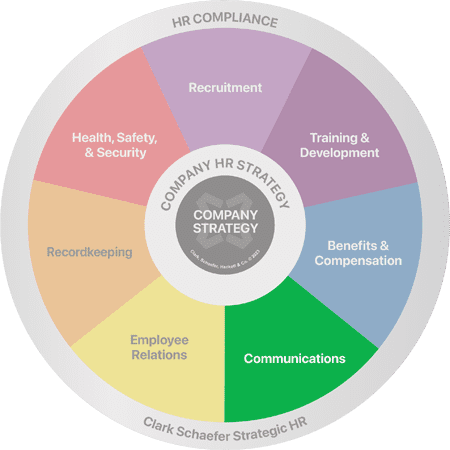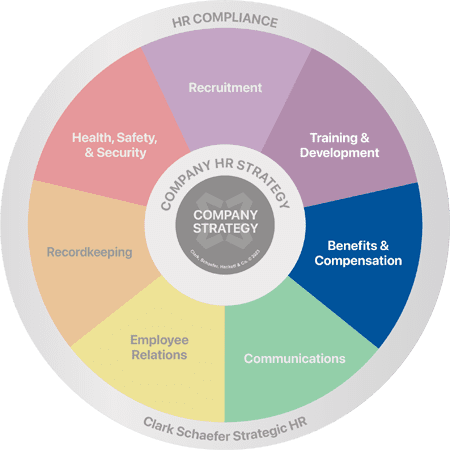Total Rewards Statements
Question:
I’ve always heard that Total Rewards Statements were a great tool to provide to employees the ones I have seen seem very difficult to understand. How can I provide a Total Reward Statement that is valuable, easy to understand, and will help my employees truly understand what their total compensation is?
Answer:
While knocking off socks is a lofty goal, a well-designed total rewards statement can have that level of positive impact. When an employee with a $50,000 base wage sees their actual total compensation (pay + benefits) is closer to $71,000, it can be a socks-knocking experience.
The power of a total rewards statement comes from the personal and detailed picture it gives employees of the full value of their work. In addition to pay and benefits, total rewards statements can also convey the value of non-monetary rewards such as work-life balance, opportunities for growth, and a great company culture.
A Brilliant Total Rewards Statement has Pizzazz
If your total rewards statements are cold, boring, or greeted with skepticism, these five tips can help give them some zing:
1. Put Employees First
Think not what a total rewards statement can do for your company . . . but what it can do for individual employees. Put your company’s strategic goals on the shelf for the moment, and get a clear vision of how your statements can help employees. When you put employees first, your statements will ultimately also yield the greatest return for your company.
2. Deliver Statements with Fanfare
Print, online, PDF, microsites—there are many options for formatting and delivering your statements. One consideration is paramount: how many of your employees will actually see their statement? How many spouses will see it?
Your statements may be masterpieces of design and marvels of technology, but if employees don’t rip open the envelope or login to view them, they’re utterly worthless.
Let employees know their statements are coming. Give managers advance notice, and reinforce the message—a job with your company is much more than just a paycheck! Consider tying the release of the statements to a special event. Include employee testimonials to heighten interest. If you deliver online statements, think about how you can encourage employees to view their statements and share them with spouses.
3. Make it Personal
Tell employees a story that’s all about them. The more personalized a total rewards statement, the more powerful its message will be. Put the value of total compensation front and center. Provide helpful information about benefits coverage and retirement savings. Use variable text to eliminate generalities so that every piece of information is relevant to the recipient.
In addition, tell your company’s story. Brand statements so they are unmistakably your own. Communicate what makes your company a great place to work, and why employees should choose to stay. Keeping quiet and letting employees draw their own conclusions is a disservice to both the company and employees.
4. Happiness is a Total Rewards Statement
By their very nature, total rewards statements send an upbeat message that the company values employees, respects them, and is focused on rewarding and retaining them. Leave the somber tone and legal language to the SPDs. Use color and graphics to create a friendly tone. Show pride in your company, your employees, and the work you do together to serve customers.
5. Don’t Get Cold Feet
Total rewards programs represent substantial investments in employees’ well-being. They are key factors for job satisfaction and retention. In a survey by WorldatWork, HR professionals judged total rewards statements to be the single most effective method for communicating the employee value proposition. So make a bold statement! Tell your company’s total rewards story with pride, and socks-knocking pizzazz.
Rita Verderber is founder and President of Insight Benefit Communications Inc. Her company has been creating sock-knockin’ total rewards statements for over 19 years. You can reach her at rita@insightben.com.



